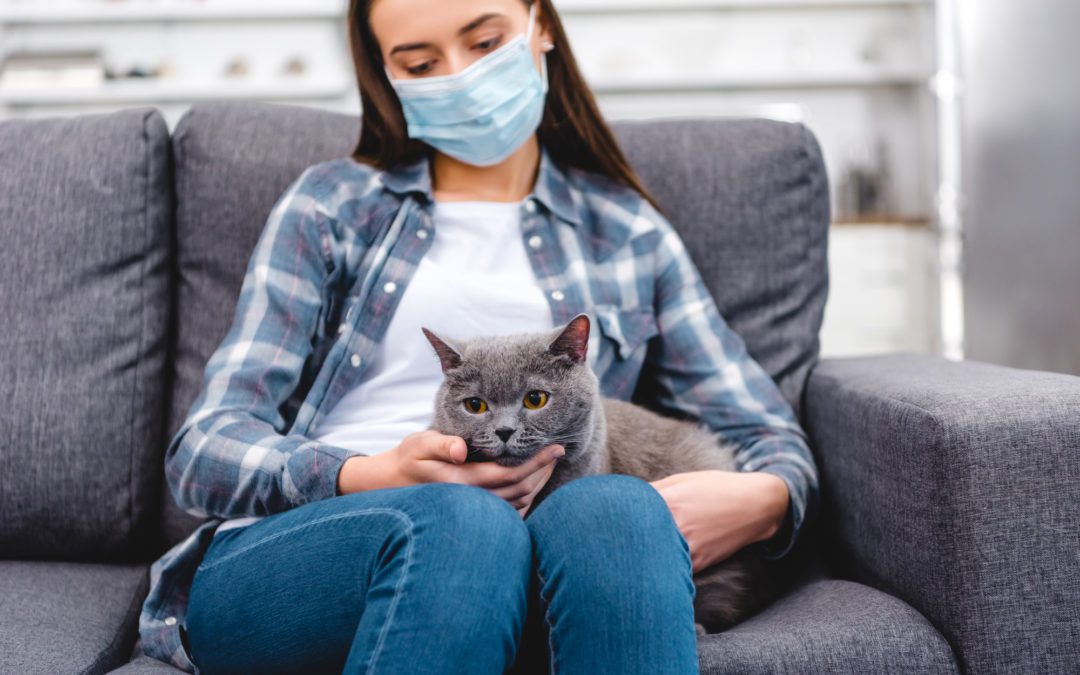Most of us think of our homes as our safe havens—especially this year, during a global pandemic. Unfortunately, your home is less safe than the outdoors in one key category: pollution. According to the United States Environmental Protection Agency (EPA), the average American spends approximately 90 percent of their time indoors, in an environment “where the concentrations of some pollutants are often 2-5 times higher than typical outdoor concentrations.” The indoor air pollution problem has worsened in recent decades, too, due in part to the rise of energy-efficient construction techniques. While those building strategies help improve sustainability, they also sometimes trap pollutants in a home for longer.
The Effects of Indoor Air Problems
Indoor air quality problems can cause a range of adverse health effects for people who live in homes with lower quality indoor air. Even in the short-term, exposure to air pollution indoors can cause respiratory illnesses, irritation to the eyes, nose, or throat, chronic fatigue, headaches, dizziness, aggravated allergies, or asthma symptoms, and more. In the longer term, indoor air problems can contribute to more severe and life-threatening illnesses, such as respiratory diseases, heart disease, or even cancer.
Preventing Air Pollution Indoors
So, what steps can homeowners take to preserve or promote good indoor air quality? There is no “silver bullet” to ensure fresh indoor air. Rather, protecting the air quality in your home is more of a holistic process that might involve a variety of different steps or lifestyle changes. Below, we have listed some of the most notable ways to combat indoor air pollution.
-
Never smoke indoors:
Few indoor air pollutants are more powerful or problematic than those caused by cigarette smoke. Cigarette smoke contains an array of toxic gases and other components, including but not limited to carbon monoxide, hydrogen cyanide, nitrogen oxides, formaldehyde, and benzene. These contaminants are dangerous in any amount, to smokers and those exposed to secondhand smoke, but they are most dangerous when a cigarette is smoked in a poorly ventilated space. Smoking indoors can leave these toxic components circulating in your home’s ducts, or can result in the contaminants getting trapped in rugs, carpeting, or furniture. E-cigarettes or vape pens are no safer, as they often contain VOCs, heavy metals, and dangerous chemicals. Keeping your home 100 percent smoke-free is one of the best things you can do to prevent indoor air pollution.
-
Clean your home regularly:
Get in the habit of cleaning your home every week or two, at least—perhaps more if you have a pet that sheds a lot. Vacuuming and dusting regularly helps remove dust, dirt, pet dander, dust mites, and other allergens or particulate matter from your home’s ecosystem before it reaches your ducts or gets recirculated through the HVAC system. As you clean, though, be conscious of which cleaning products you use to mop floors or wipe down countertops. Many household cleaners are rich in chemicals that give off fumes and compromise interior air quality. Consider swapping out those harsher cleaners for more natural alternatives.
-
Think about ventilation:
Ventilation is an incredibly crucial aspect of your home. From your HVAC system to your fireplace and chimney (if applicable) to the range hood on your oven and stove, it’s important to make sure your home is well ventilated when you move in or if you have found yourself experiencing some of the symptoms of poor air quality. Even a step as simple as changing out your HVAC system’s air filter can make a huge difference in how effective your home ventilation is. Good ventilation serves to reduce the level of pollutants in the air in your home, which in turn helps keep you healthier. Don’t forget about natural ventilation, either. While having windows or screen doors open can sometimes be counterproductive—if, say, there are high levels of pollen outside—it is usually a terrific way to bring fresh air into your home.
-
Invest in duct cleaning:
Your HVAC system’s ducts are the highways by which heated or cooled air is delivered throughout your home. If your ducts are dirty or contaminated, that can affect the quality of the air that comes out of them on the other end. Over time, ducts can build up all sorts of different contaminants, from dust and dog hair to mildew and mold. Having your HVAC professional clean your ducts every 1-2 years will not only have a positive effect on indoor air quality, but will also improve the airflow of your HVAC system, thereby boosting the efficiency of the system and lowering your monthly heating or cooling bills.
This list is not comprehensive. Other strategies, such as repairing water damage promptly, using dehumidifiers and air purifiers in different spots throughout your house, and simply not wearing shoes indoors can help cut down on contaminants in the air. If you need help devising a strategy for improving the quality of your home’s indoor air, consult with an HVAC expert today.

